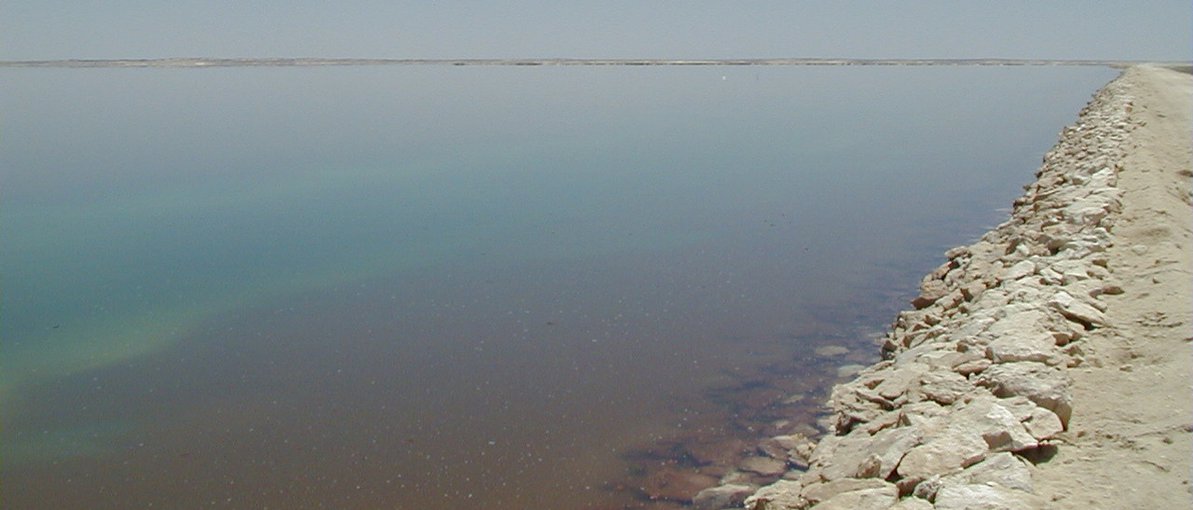
April 12, 2019
Research Highlight
Interpreting Lipid Biomarkers in Microbial Mats

A hyperaline pond, (Area 6) in the Exportadora de Sal saltern system, Guerrero Negro, Baja California Sur, Mexico. Thick microbial mats line the bottom of this entire pond.Image credit: Microbes@NASA.
A new study examines lipid biomarkers in modern microbial mat ecosystems in order to gain insight into the ancient biomarker record. Researchers measured lipid biomarkers in insoluble macromolecular organic matter (IMOM) from hypersaline microbial mats at Guerrero Negro, Baja California Sur, Mexico. The team found that a complex variety of lipids were bound in IMOM, and this binding begins to occur within only a few years of sediment burial.
The study provides new data about the timing of chemical binding of the target molecules (steroids and hopanoids) in microbial mats, and the products that are produced as these molecules are processed during the early stages of sedimentary rock formation in such systems. This information has implications for understanding the long-term preservation of biomarker lipids in microbial mat sediments from Earth’s geological record.
The study, “Early diagenetic sequestration of microbial mat lipid biomarkers through covalent binding into insoluble macromolecular organic matter (IMOM) as revealed by sequential chemolysis and catalytic hydropyrolysis,” was published in the journal Organic Geochemistry. The work was supported by NASA Astrobiology through the Exobiology Program.